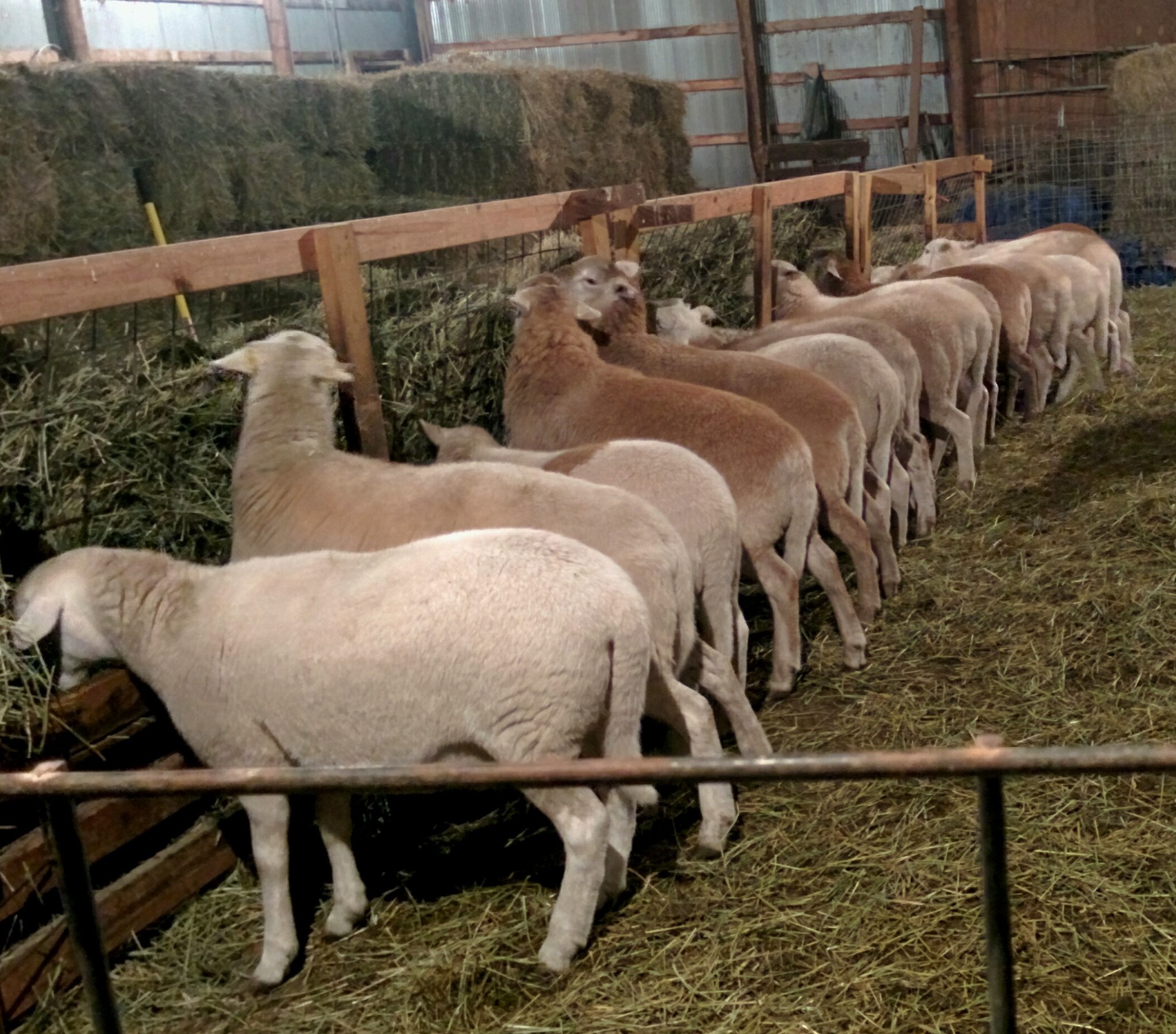Main Content

Investing in proper nutrition for pregnant and lactating ewes saves both time and money in the long run. Ewes in good body condition prior to delivery have healthier lambs and fewer complications than underweight or overweight ewes. As 70% of fetal lamb growth occurs in the last five weeks of pregnancy, it is important to increase feed for ewes at this time. After lambing, it is essential for ewes to have enough nutrients to produce milk for their lambs.
Lambs rely on their mother for their nutritional needs. Underfed ewes have lambs with lower birth weights. Compared to lambs with healthy birth weights, lambs with low birth weight:
- Are weaker
- Have lower survival rates
- Are at greater risk for disease
- Have slower growth rates
Producing lambs, and subsequently milk to feed those lambs, is energetically expensive for ewes. Underfed and underweight ewes:
- Are likely to have complicated deliveries
- Cannot produce enough milk to support their lambs
- May not produce high-quality, nutrient-dense milk
- Are at risk for pregnancy toxemia and milk fever
All of these factors result in added costs or financial losses. For example, supplementing with milk replacer can be expensive, and grafting an underfed lamb to another ewe is time consuming. Feeding ewes appropriately can prevent this.
A healthy, well-fed ewe will produce enough milk to feed her lambs. Ewes with multiple lambs will naturally produce more milk in response to the stimulus of suckling lambs. A ewe nursing twins will produce anywhere from 30–50% more milk than a ewe with a single lamb. Intuitively, ewes nursing multiples will need more energy – more calories – than ewes feeding a single lamb.
In addition to their feed, ewes rely on their body condition (fat stores) for the energy needed to produce milk, especially in early milk production. The initial energy demand of milk production is so great, the ewe cannot consume enough to keep up. It is not unusual for a ewe to lose weight, especially when feeding multiple lambs; however, it is important the ewe be able to easily recover that conditioning after weaning. A loss in body condition score of more than 0.5–1 is cause for concern. Conversely, if a ewe does not lose weight, it may be an indicator of poor milk production or quality. Monitor the growth of her lambs and be prepared to supplement if necessary.
What does a lactating ewe need?
- Unlimited access to clean, fresh water: milk is approximately 85% water, by volume. A lactating ewe may consume twice as much water as dry ewes!
- Energy: Demand for energy increases by 30%.
- Early spring grasses are likely in too short supply to sustain the energy needs of lactating ewes. Supplement with quality hay until the pasture is established enough to meet the needs of ewes.
- Protein: Demand increases by up to 55%.
- Grain should be increased to provide substantial protein. A general rule is to add 1 pound of feed per lamb per day, although this amount varies considerably between breeds and with the quality of hay provided.
Minerals and vitamins are also critical in preventing diseases associated with lambing.
- Calcium: is essential for a number of physiological processes, but especially critical in milk production. Ewes with insufficient dietary calcium, or an inability to utilize available calcium, will suffer from Hypocalcemia, more commonly called Milk Fever. Milk Fever can lead to death.
- Selenium: Many soils in the US are deficient in selenium, and feeds contain supplemental selenium to prevent White Muscle Disease in lambs. White Muscle Disease is a nutritional muscular dystrophy, or degeneration of the skeletal and cardiac muscles of lambs that can also lead to death.
Another important note: Rapid changes in diet can disrupt the microbiome in the ruminant digestive system. Gradually introduce changes in diet in order to prevent additional complications. By considering the needs of lactating ewes, a shepherd can ensure a healthy crop of lambs.
By Mary McLaughlin, Somerset County 4-H Volunteer